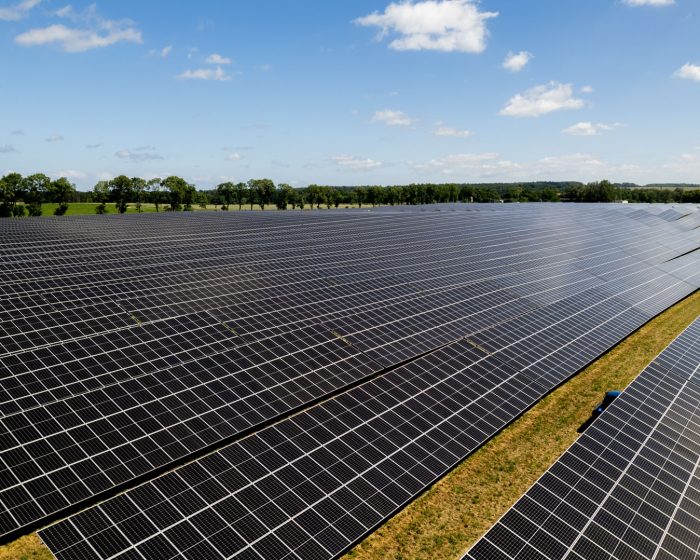Facts and Myths About Wind Energy
Wind energy is one of the cleanest and most environmentally friendly sources of energy. Nevertheless, many myths have arisen around wind turbines – from the alleged harmfulness of infrasound to supposed negative effects on climate, soil, or wildlife. Let’s see what scientific research says about these claims.
Fact: The blades are primarily made of glass and carbon fibers, but their share in global consumption of these materials is negligible. Their environmental impact is minimal.
Evidence: The production of one carbon bicycle consumes as much fiber as a turbine blade that provides electricity for one person for 25 years.
Fact: The level of infrasound emitted by turbines is comparable to that produced by wind or trees and does not exceed safety standards.
Evidence: The Polish Academy of Sciences report “Wind Power Plants in the Human Environment” (2022) shows that levels of infrasound are well below harmful thresholds.
Fact: Population studies do not confirm increased incidence of illnesses near wind farms.
Evidence: A Danish study covering 1.9 million people (Poulsen et al., 2019) found no increased risk of cardiovascular diseases among residents living near wind farms.
Fact: Experiments showing harmful effects involved unnaturally high laboratory conditions. In reality, noise and vibration levels are much lower.
Evidence: At just 700 meters from a turbine, vibration levels are lower than in a city. Storms and traffic generate far stronger vibrations.
Fact: Turbine power does not affect infrasound levels – they remain at natural background noise levels.
Evidence: The Polish Academy of Sciences report (2022) found no link between turbine size and neurological or circulatory diseases.
Fact: There is no mechanism because there is no evidence of harmful effects from turbine infrasound.
Evidence: Even people exposed to much stronger infrasound e.g. bus drivers, have not shown health problems.
Fact: Population studies do not support this risk.
Evidence: Research involving large groups of people (Poulsen et al., 2019) found no differences in cardiovascular health. Infrasound levels near turbines are lower than on a bus, so they pose no danger.
Fact: There is no evidence of a negative impact of wind farms on whale populations or other marine ecosystem elements.
Evidence: In the UK, with 13 GW of offshore wind capacity, no increase in whale mortality or adverse effects on bird or marine animal populations has been observed (DEFRA, 2021).
Fact: Wind turbines do not harm the climate, soil, or weather. The main sources of pollution and climate change is the burning of fossil fuels, such as coal and oil.
Evidence: WHO (2020) shows that coal smog shortens the life of Poles by an average of 9 months. Wind turbines have no such effect.
Wind turbines are often the subject of myths, usually arising from misunderstandings or misinformation. Analysis of research clearly shows that:The development of wind turbines is a key element of the energy transition, leading to a cleaner and safer future.
- Wind energy does not pose a threat to human or animal health,
- It does not harm the environment or the climate,
- It is a real alternative to harmful fossil fuels.
Read also

How does renewable energy work? Basic facts on RES
Renewable energy is energy from natural sources which do not run out or which renew themselves in a relatively short time. But how does it get into our homes, schools or businesses in reality? What technologies are behind this process and how do they work? Imagine a house that produces its own electricity, or a […]

Energy like bread – why is it worth saving electricity?
How is electricity different from bread? Well… not really – except that while no one needs to be persuaded to save food, saving energy is still problematic for many people.




